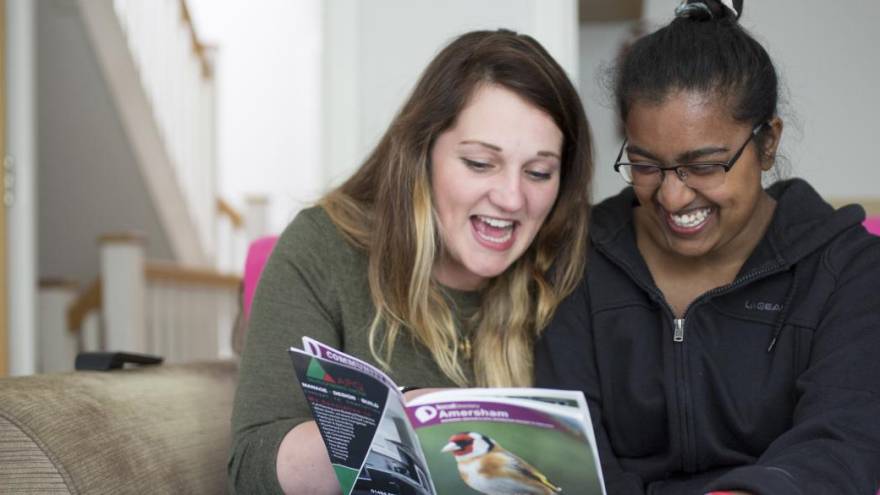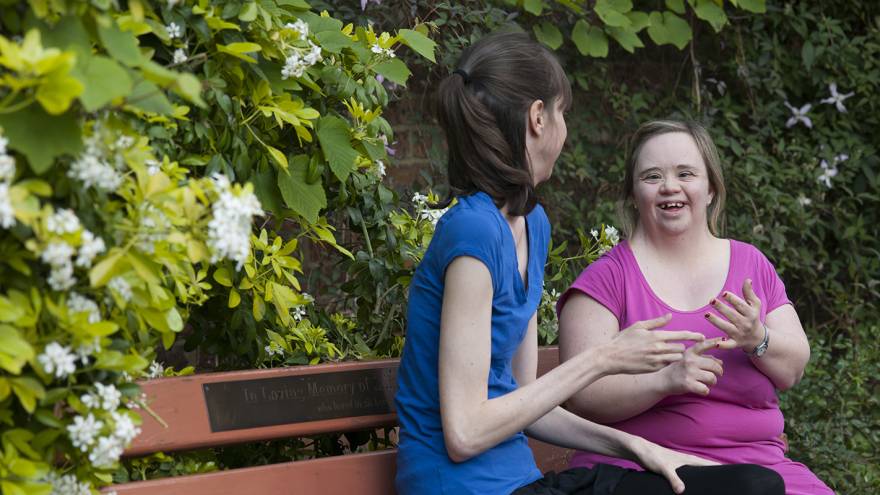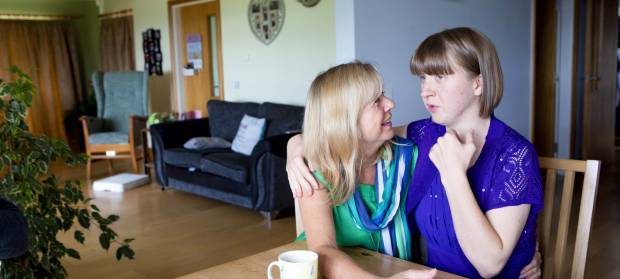Making communication work
Communication isn't just about talking, it's also listening.
When you're communicating with someone with a learning disability, think about your tone of voice and your body language, as well as the words you use.

Being a good communicator
To be a good communicator with people with a learning disability you need to:
- use accessible language
- avoid jargon or long words that might be hard to understand.
- be prepared to use different communication tools
- follow the lead of the person you're communicating with
- go at the pace of the person you're communicating with, check you have understood and be creative.

Makaton
Makaton is a language programme that uses signs, symbols and speech; giving a person different options when communicating.
We've worked with The Makaton Charity on some useful information about Makaton and how it is used.
Visit the webpage to find out more.
“Sometimes I’ve got the words in my mind, and I’m trying to explain it in the best possible way, but it doesn’t always come out.”
Top tips for communication
Remember, everybody is unique, so take the time to ask the person you're communicating with what works best for them.
In person: Many people with a learning disability prefer face to face and one to one communication.
In writing: Use bigger text and bullet points, and to keep writing at a minimum. Too much colour can make reading harder for someone as well.
On the phone: Speak slowly and clearly, using easy to understand words.
You may also find these tips useful:
- Find a good place to communicate in - somewhere without distraction. If you are talking to a large group be aware that some people may find this difficult.
- Ask open questions; questions that don't have a simple yes or no answer.
- Check with the person that you understand what they are saying e.g. "the TV isn't working? Is that right?"
- If the person wants to take you to show you something, go with them.
- Watch the person; they may tell you things by their body language and facial expressions.
- Learn from experience - you will need to be more observant and don't feel awkward about asking parents or carers for their help.
- Try drawing - even if your drawing isn't great, it might still be helpful.
- Take you time, don't rush communication.
- Use gestures and facial expressions. If you're asking if someone is happy or unhappy, make your facial expression unhappy to reinforce what you're saying.
- Be aware that some people find it easier to use real objects to communicate, but photos and pictures can really help too.
Remember, all communication is meaningful, but you may need to work harder to understand.
Further help
Many people with a learning disability can use or recognise some signs. Signalong and Makaton are both Sign Supported English systems. They are based on British Sign Language (BSL), but are used to support the spoken word.
- Visit the Signalong website or the Makaton website to find out more.
- Visit the British Deaf Association website to find out more about BSL.
- Talking Mats are a communication system that uses symbols and other images.
- Widgit produce software symbols to help with communication and accessibility.
- Symbol World is a website run by Widget for symbol users that includes nursery rhymes, stories and a monthly magazine.
This information on this page is also available to download as a PDF.
